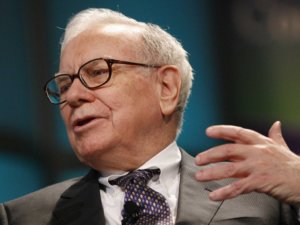How to Trade like Warren Buffet
Warren Buffett. CEO of Berkshire Hathaway. The world’s greatest investor. The Oracle of Omaha….. and you. You, want to be the next Warren Buffett.

Why not? Sure he reputedly has a photographic memory for obscure financial statements filed by companies from the sixties onwards. And he was the only person ever to receive an A in Benjamin Graham’s course on value investing. That Benjamin Graham. A man so smart that he quoted the classics in Latin for fun, and was offered a teaching post in five different departments on graduating from Columbia University.
Not to put too fine a point on it, but you are not likely to be able to match Warren Buffett all too easily.
But, that doesn’t mean you can’t trade like Warren Buffett.
Trade is probably not the right word here. Let go with investing. In fact, value investing is what we should be talking about.
The genesis of Warren Buffett’s investing methodology started with the work of Graham, but soon evolved. Graham, having gone through the depression, focussed on companies that had a strong margin of safety, so strong in fact, that it would often have more actual cash than the market cap, to the equivalent of spending 40 cents to buy a dollar. Though this was still possible during and post depression, in later years, these sorts of bargains were challenging to come by.
The core of Graham’s value investing was to treat a share purchase like a business owner purchasing a business. Mostly, it shuns the market’s pricing (“Mr Market”), and attempts to determine the true value of the business based on a deep analysis into the business financials. Once determining a value point, the price per share is determined. If the share is trading at enough of a discount based on the market price, it is a buy. If it is not, then it is not to purchased.
The fundamental criticism with the type of margin of safety that Graham required was that it did not require that the business was in actual fact a strong business, simply because its current assets outweighed its market cap. Buffett realized that it was better to pursue companies that provided good long term profit potential. He reasoned, with the help of Charlie Munger, that if they could be bought for a price lower than the value, this would not only give a margin of security, but a long term investment that would continue to flow cash indefinitely.
Ever the statistician at heart, Buffett focussed on longer term traded companies with a long track record of success, because it could give him a more reliable data set.
As time went on, Buffett began to add other elements that he particularly sought in a potential company. To create his margin of safety, he looked for companies with strong, honest management, companies with a sustainable low cost model (like Geiko), those which would thrive in all economic conditions (like See’s Candies) and companies with a market leading “moat” (like Coca Cola). Buffett ideally would hold his positions for ever, and will go all in for a company that fulfils his criteria.
Before you can trade like Buffett, you need to understand how Buffett approaches his investments, what he looks for, and why he invests. You need to study his previous investments as well as his current ones to understand the concepts behind his investing strategy. Books like Mary Buffett’s “Buffettology” and blogs like www.oldschoolvalue.com, are essential tools to developing the tools to really invest like Warren.
Of course, if all else fails, you can simply do it the cheaters way, by buying an ETF which tracks Warren’s investments, or better still, Berkshire Hathaway shares. As the saying goes “If you can’t beat ‘em, join ‘em”.









